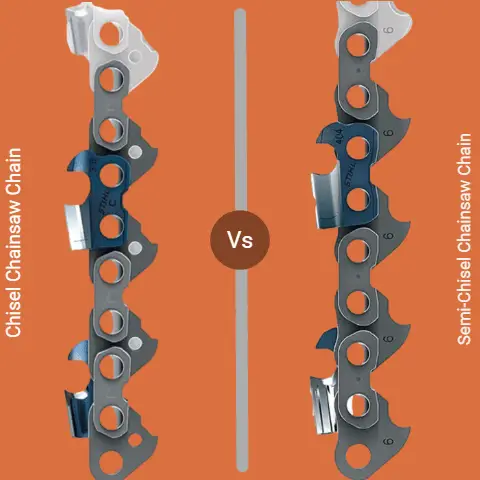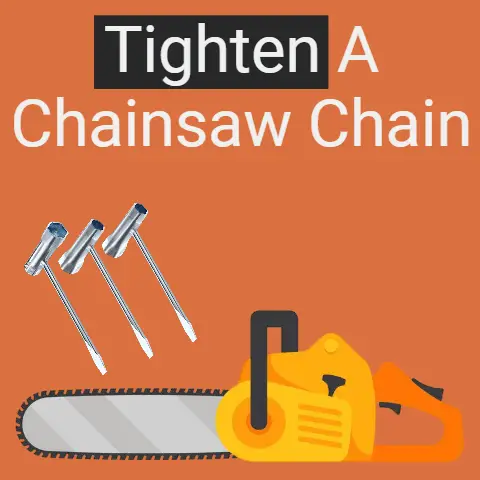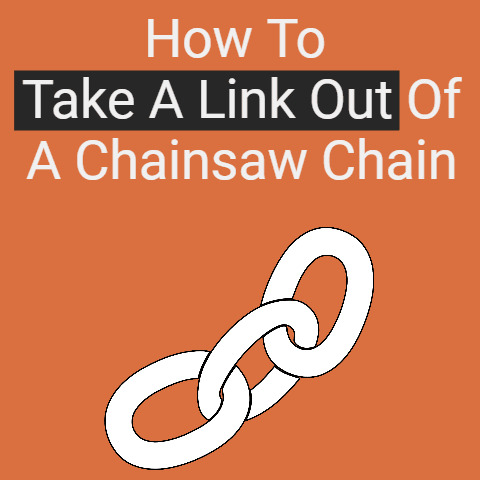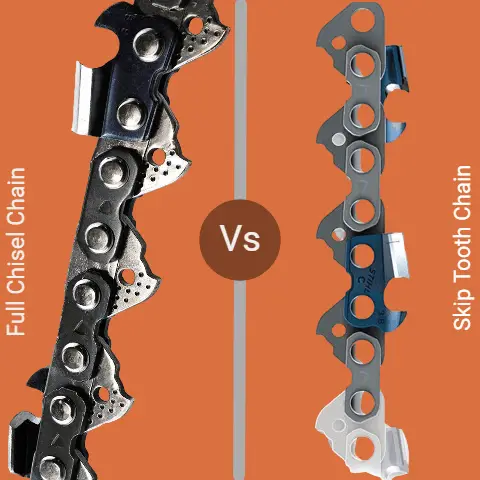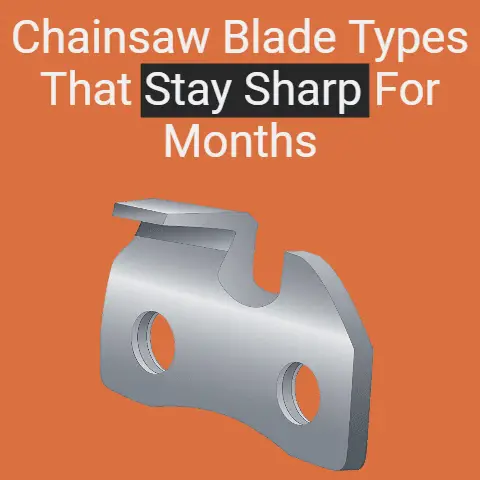Are Carbide Chainsaw Chains Worth It? (Explained)
Considering the specific use cases where carbide chainsaw chains excel, it’s important to evaluate your needs and budget before deciding if they are worth the investment for your chainsaw. For most users, regular chains should suffice for typical wood-cutting tasks, while carbide chains may be more suitable for specialized applications such as rescue and demolition work.
The Author
The purpose of applying carbide to the chainsaw chain is to lengthen the life of the blade and maintain its sharpness.
It reduces the frequency of sharpening the chain. It does not produce much vibration. After sharpening, it will cut 4 to 5 times more wood compared to the normal steel chain.
Carbide is one of the compounds used in adding brittleness to chainsaws chain.
It is a solid compound whose density is two times steel’s density.
When coated with Carbide, the chainsaw chain cannot be sharpened with ease but with coated files and discs.
Diamond is usually harnessed as the coating material for the disc and file.
Despite the brittleness that Carbide brings to the saw chains, many users are still skeptical about its functionality and effectiveness.
Here comes the big question; are the carbide chainsaw chains worth the buzz?
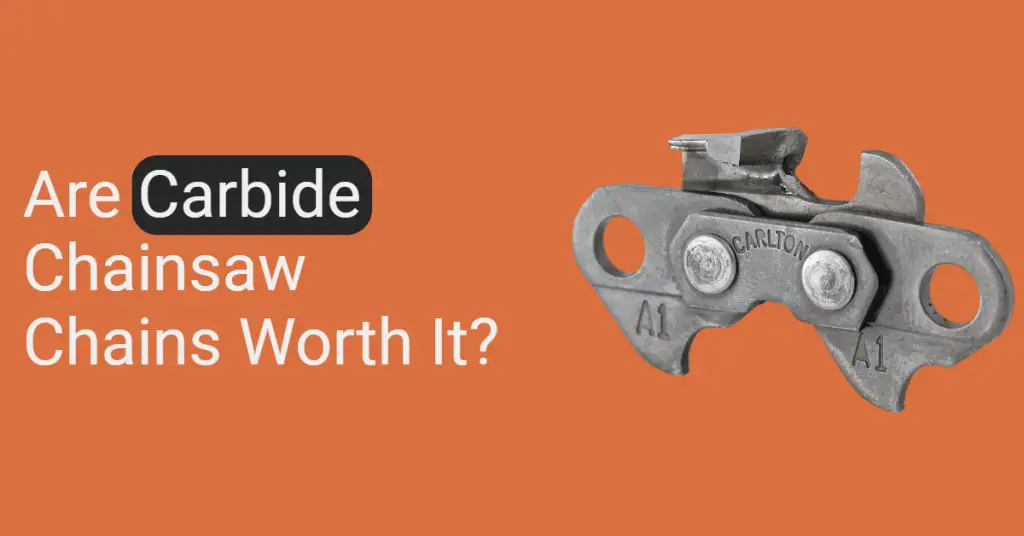
what is Carbide Chainsaw Chain?
Carbide chainsaw chains are chainsaw chains that have carbide tips on the cutting teeth. These chains are designed to be more durable and long-lasting than traditional steel chains, making them ideal for rough and tough jobs. Here are some of the key features of carbide chainsaw chains:
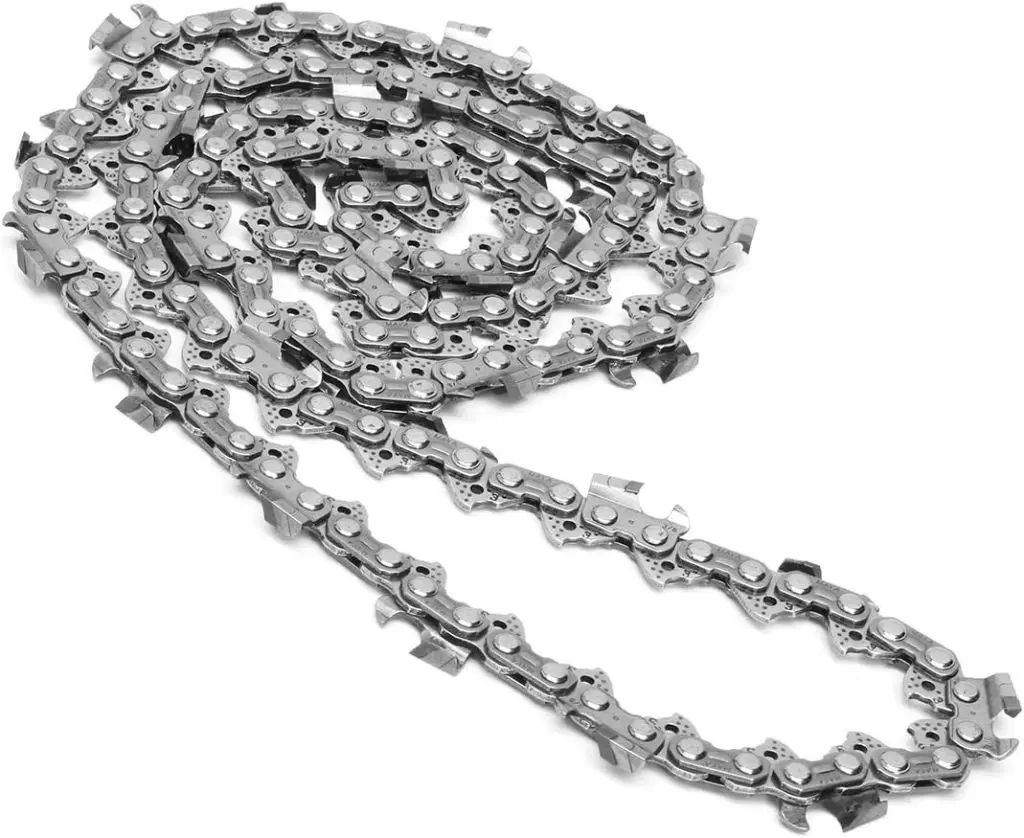
Pros of Carbide Chainsaw Chains:
- Durability and Longevity: Carbide chainsaw chains have carbide tips on the cutting teeth, which are more durable and long-lasting than traditional steel.
- Cuts More Wood per Sharpen: Carbide cuts approximately 4-5 times more wood per sharpen than conventional steel chain, making them a good choice for users who don’t want to replace their chains frequently.
- Cutting through Hard Materials: These chains are designed to cut through harder objects, such as metal or masonry, while still maintaining their sharpness.
Cons of Carbide Chainsaw Chains:
- Higher Cost: Carbide chains are considerably more expensive than traditional steel chains, which can make them less cost-effective for regular wood-cutting tasks.
- Difficulty in Sharpening: Sharpening carbide chains can be more challenging and may require professional assistance, adding to the overall maintenance cost.
- Slower Cutting Speed: Carbide chains may have a slower cutting speed compared to regular chains, which can be a disadvantage for users who prioritize efficiency
The need for the carbide chainsaw
Once you apply carbide on the tip of your Chainsaw, know that you are on your way to experiencing a different cutting style.
You will not need to sharpen your chainsaw regularly, as the frequency of sharpening will reduce.
The carbide maintains the sharp edge and keeps it brittle for a long while.
You can cut up to 120m2 before there will be a need for you to re-sharpen the chainsaw.
After sharpening, it will cut 4 to 5 times more wood compared to the normal steel chain.
The tooth will become chiseled and would be ideal for ripping through dry and fresh wood.
The purpose of applying carbide to the chainsaw is to lengthen the life of the blade and maintain its sharpness.
With the carbide on your chainsaw tip, the frequency of sharpening will reduce.
But then, you should weigh your options since the cost of sharpening is high.
From research and experience, the carbide chainsaw lasts three times more than the normal chainsaw.
When in use, it does not produce much vibration since the tooth is welded with a laser.
Dirty woods usually pose lots of difficulties during cutting but the Carbide tipped chainsaw will cut them with ease.
Even treated woods, stumps, and hard woods can be cut with minimal fuss.
However, you should be watchful while cutting to avoid stumbling on steel, or hard rock. This might damage the chainsaw.
Challenges in using the carbide chainsaw
Just like every other item, you should offer proper care and maintenance to the carbide-coated chainsaw to sustain the lifetime of the machine.
Keep it clean after every job and ensure that you wipe away all debris.
This does not imply that the carbide chainsaw will not spoil at some point. It will definitely be damaged, but it shouldn’t be too sudden.
Observe keenly and decipher the right time to replace the saw.
If your carbide blade is topnotch, then you can sharpen it for more than 5 times before there is need for replacement of the teeth.
It wouldn’t be all the teeth at the same time, as you can replace the ones that are damaged.
Another thing that you will face regularly is sharpening of the blades.
Sharpening the carbide blades is not as easy as it seems to be, because it is cost intensive.
The cost of new blades is virtually the amount you will spend in sharpening the blades thrice.
Many users usually ponder on the best time to sharpen their blades.
You should continue sharpening your blades so long it is not warped.
It is cost intensive since you may not be able to do it yourself.
Don’t hesitate to contact Professionals for your carbide chainsaw sharpening.
They will charge you, but it is always an excellent decision to pay for something good.
Your carbide blades can be damaged or wrongly oriented if it is not properly sharpened.
The carbide blades’ teeth are so hard and can only be sharpened by using a diamond wheel.
Lots of caution is needed in the sharpening process.
Even the diamond blade used for ripping through tiles might spoil the tip of your carbide blade.
Another challenge you will face is that you must check for the flatness of your carbide blade after every sharpening session.
A bent blade will not be efficient.
Rusting and buildup of pitch is another thing you should be wary of as they might hinder optimal performance.
A rusty blade will leave stains and marks on your items, generate excess heat on the point of contact and cause unwarranted wear and tear on the items.
Excess heating leads to warping and sharp edges.
Despite the sharpness, if there is no proper checks for flatness, the blade will not deliver straight and clean cut.
This is a big challenge that you must sit back to think about before considering a carbide chainsaw.
By getting a carbide chainsaw, you will spend a little more than getting a conventional chainsaw.
However, the carbide does not make the blade indestructible, as it can be damaged if not handled properly.
You can also damage it if you sharpen it for too many times.
So, what is your take?
There is a myth that says that the Carbide Chain can be used to cut anything.
Today, this myth has been dismissed and one has to sit back and ponder deeply whether it would be better to invest money and time in learning how to maintain and sharpen the conventional chainsaw than buying the carbide blade chainsaw which sparingly needs sharpening.
The weight of the carbide can reduce the cutting speed and you should know that cutting dirty wood with a carbide blade chainsaw is not a rule of thumb.
It is not a magical solution, as you can as well use your axe to cut away the dirty section.
By cutting mainly clean wood, you will use your carbide blade chainsaw for more than a season without sharpening even if you use your chainsaw every day.
However, you should be wary of stone, metal or hard rock.
Final Words
If you apply caution and attention, then you will be able to get the benefits of the carbide chainsaw to your advantage but if you are careless, get ready to waste money in sharpening or replacing your expensive carbide chains frequently.
On the whole, you should weigh your options to ascertain whether the carbide chainsaw is really worth the buzz. So, what’s your take?


